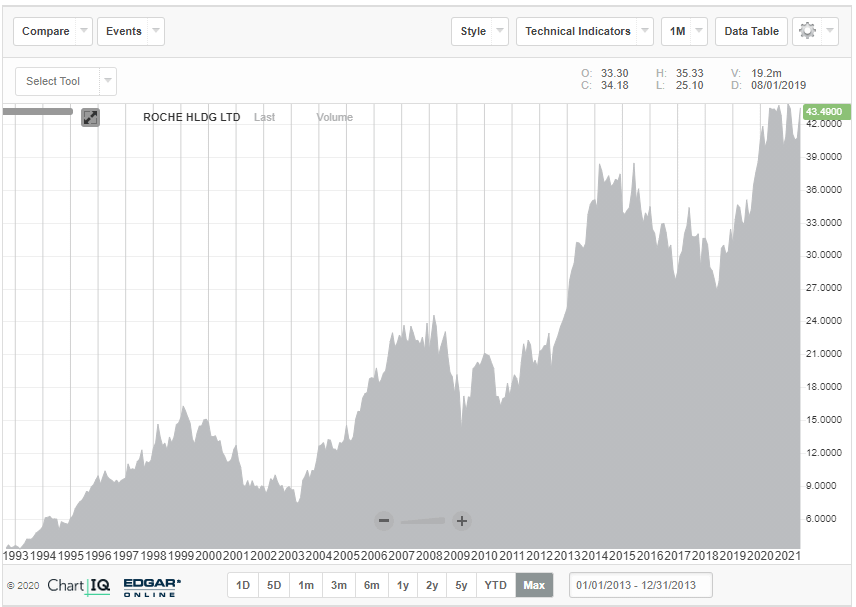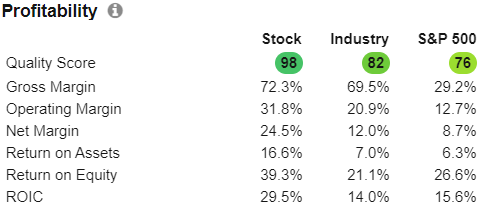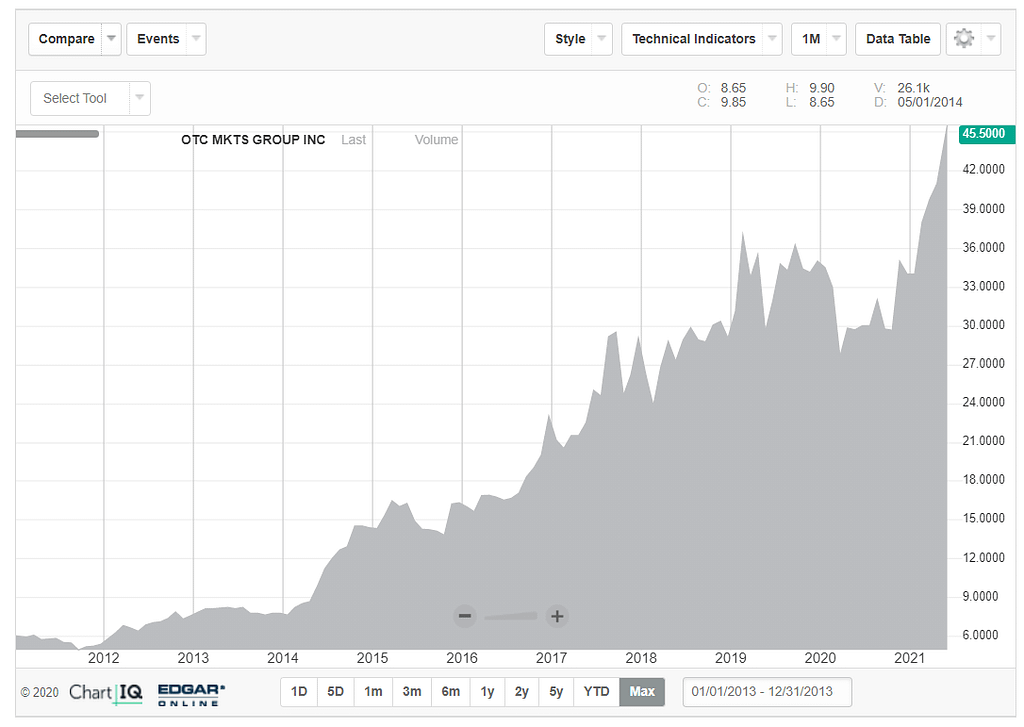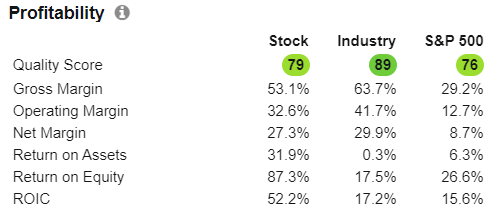I get a lot of questions about Penny stocks, and whether or not they are good buys. However, my answer is always the same for every stock: “it depends”.
“Depends on what?” you might ask. Well…a lot. Every stock carries its own inherent risks and rewards. Many people unfortunately correlate the “low prices” of penny stocks with less risk. This could not be further from the truth, as every intelligent investor knows that price and volatility are not the risks of an investment.
That being said, I used to laugh at Penny stock investors, thinking they were simply gambling their money away on the casino that was an over-the-counter (OTC) market. I would simply screen out any of the companies on the OTC, simply throwing them in the garbage bin, categorizing them as “too risky”.
However, this notion is not completely true. Yes, bad investors and bad businesses do still lurk on the OTC. After I did a lot of research, to my chagrin, I found there are quite a few good businesses that appear on the OTC. It’s not the casino I thought it was; it’s simply just another exchange to list companies on.
My perspective on micro/small cap space has really changed after reading 100 Baggers: Stocks That Return 100-to-1 and How To Find Them, by Christopher Mayer. I have since learned that there are great opportunities that are deemed to be penny stocks. You just have to know what metrics to look for. This is a strategy that I definitely plan to incorporate into my portfolio.
So in this article, I thought I would educate readers a bit on the OTC markets and Penny stocks and hopefully clear up some misconceptions. I’ll also show two examples of 10 baggers (and possibly future 100 baggers!) that are currently listed on the OTC.
Disclaimer: These are not recommendations, nor have I done any deep research on these stocks. These picks are simple examples.
So, What is a Penny Stock?
Google “What is a penny stock?”, and chances are you’ll get back a plethora of definitions that revolve around stocks that trade under $5, which trade through the over-the-counter OTC Bulletin Board (OTCBB).
While both those imperatives of a penny stock are technically accurate, as value investors (who come across these definitions), you shouldn’t let this “typical” definition of a Penny stock (under $5 OTC members) convince you that the stock doesn’t hold value.
Honestly, I used to be quite skeptical about stocks on the OTC markets, thinking that they were only reserved for terrible businesses that wanted to cash in and out fast. As I mentioned before, this is the case sometimes, but there are still plenty of diamonds in the rough.
According to SEC rule 240.3a51-1, the “typical” definition of Penny, highlighted above, holds true. You characteristically won’t find Penny trading above $5, and that too, not on national securities exchanges like Nasdaq, NYSE, or CBOE Futures Exchange (CFE®). However, what most value seekers may not realize is that there are some Penny Stock Exemptions, both under the SEC 240.3a51-1, as well as under the January 1, 1990 Penny Stock Reforms Act (Rule 15c2-6), that may still bring value to Penny Stocks – legally, practically and from a great investment idea standpoint.
This exemption means that a security may be exempt from the “typical” definition of “Penny” if it meets even one of the following conditions:
- A price of over $5 per share
- The issuer has Average Revenue of at least $6 million for the last 3 years.
- The issuer has Net Tangible Assets in excess of $2 million if the issuer has been in continuous operations for at least 3 years or $5 million if less than 3 years.
Translation: Penny may be found on the Nasdaq or NYSE too – and doesn’t exclusively have to trade on the OTC market. Additionally, a stock trading below $5 doesn’t necessarily become a Penny stock. Shrewd investors may find good value in Penny stocks, regardless if it does or does not meet the over/under $5 test.
The Catch
When investing in Small/Micro Cap stocks on the OTC, there is something you have to keep in mind: low volume.
In general, there is less daily trading activity on the OTC markets compared to their larger brethren. This means that there is less liquidity, which can make it more difficult to enter or exit your position at the price you want.
Because of this problem, stock prices have been manipulated and susceptible to pump and dump schemes. This is not always the case, but it has happened before, and is definitely a specific risk to Penny stocks.
10 Bagger Example #1: Roche Holding Ltd (RHHBY)

Source: OTC Markets
Let’s look at Roche Holding Ltd (RHHBY) on the OTC. Roche is a Swiss Pharma company that has been operating since 1896. Currently trading in the $40-range, this name is listed on the OTC – a typical domain of Penny and her cohorts.
So, although RHHBY is listed on the OTC, it’s obviously no longer a Penny stock, as it is currently trading above $40 and has a market cap of almost $300M.
I bring up RHHBY because at one point in time (back in the 1990s), RHHBY was the epitome of a Penny stock – trading below $5 and listed on the OTC. But since then, this stock has delivered good value to its investors. Since the early 1990’s, it has compounded at a respectable rate of 8% per year. Nothing exceptional, but still managed to become a 10 bagger.
So, is RHHBY still presenting a good value for shareholders? Over the past 5-years, RHHBY has delivered reliably improving Gross Profit, Operating Income and Net Income. It has also been delivering improving Gross Margins and Operating Margins consistently over that time frame.

RHHBY Profitability (Source: Stock Rover)
10 Bagger Example #2: OTC Markets (OTCM)

Source: OTC Markets
This stock is kind of an ironic pick. OTCM is actually the company that operates the actual OTC Market that all the penny stocks are listed on! Again, while no longer a penny stock, it was when it first began.
The firm mainly operates OTCQX best market, OTCQB venture market and Pink open market. It has OTC link ATS, market data licensing and corporate services business lines. The activities of these business lines encompass quotation and trade messaging services, network-based platform, access to market data, a suite of market data licenses and disclosure and information services.
OTCM’s business seems to be operating with stellar growth and profitability, with an ROIC of over 50%. This is due to the subscription type of service they charge companies to be listed on their exchange.

OTCM Profitability (Source: Stock Rover)
So, here again is another great business that has proven to be a 10 bagger. OTCM may even have the ability to become a 100 bagger one day, who knows?
Best of Both Worlds
The advantage of investing in “penny-type” stocks listed on national exchanges like the NYSE, which also have value to them, gives investors the best of both worlds.
Above all, it’s important to look at many factors (like profitability and scale) in order to nail these opportunities. The point here is that as an intelligent investor, you shouldn’t leave out researching investments simply because they are listed on the OTC, or simply because they are deemed too small.
As long as you are aware of the inherent risks, you can potentially find some bargains that may turn out to be 10, or even 100 baggers.

The Ultimate Guide to Value Investing
Do you want to know how to invest like the value investing legend Warren Buffett? All you need is money to invest, a little patience—and this book. Learn more























